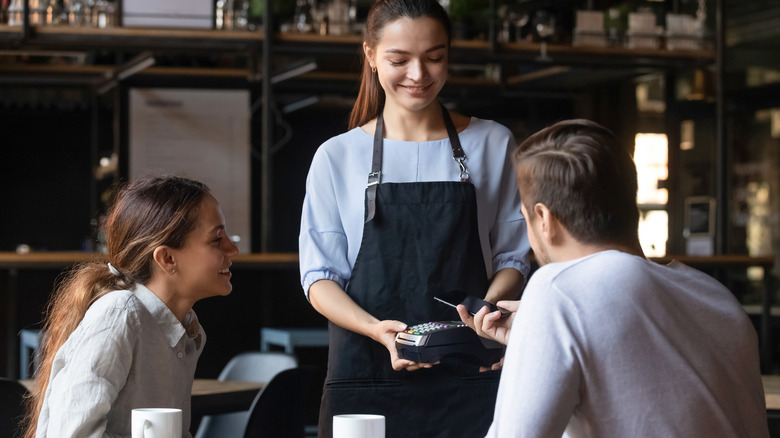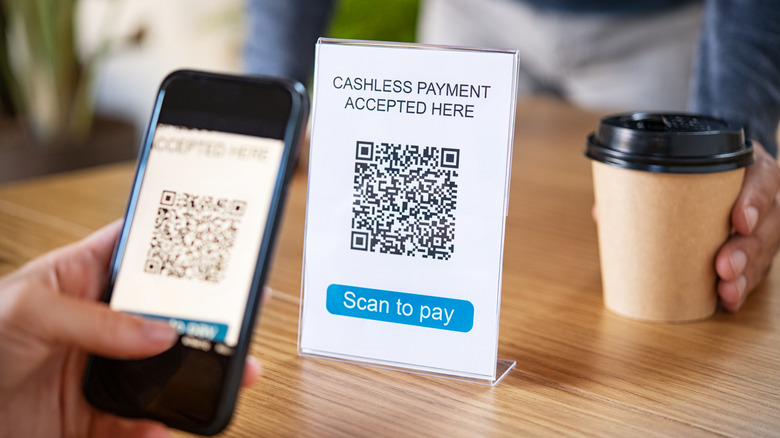How COVID Changed The Way We Pay For Dinner
The pandemic made getting "back to normal" a thing of the past. Before we knew how the virus was transmitted, it had us scrubbing our produce, wiping down every surface, and sanitizing our hands after entering our debit card code on a keypad that every customer had touched. Fear of transmission ushered in a new era of contactless transactions, and now that customers and retailers have begun enjoying the ease and benefit of it, there's no going back.
According to American Express, consumers are increasingly using contact-free payments because they are quick, easy, and more secure. A 2020 Mastercard global consumer study found that almost eight in 10 consumers use some form of contactless payment, like Apple Pay, Google Pay, or an NFC-enabled card that can complete a purchase with a simple tap. On a global scale, 46% of consumers who responded to the survey said that they prefer contactless payment and view it as a cleaner, safer alternative to traditional methods like cash, checks, or pins.
Touchless payments are driving consumer trends, and Global Banking and Finance Review notes that over ½ of respondents to a consumer behavior survey say they even choose restaurants in part based on the availability of contactless payments. With 74% of users committing to continued contactless payment after the pandemic, according to Mastercard, it will likely be the new way to pay moving forward.
How businesses can prepare for contactless payment becoming the norm
Restaurants and diners have adapted to new pandemic-inspired payment methods like snapping pictures of Quick Response (QR) codes and simply tapping their smartphones or cards over a reader when it comes time to pay. While contactless payment methods won't stop your friend from conveniently realizing they forgot their wallet when the check comes (don't worry, they can Venmo you later), they have improved many aspects of paying for customers and businesses alike.
According to Restaurant Dive, a survey of 500 restaurants showed that 61% plan to continue offering contact-free payment methods. Global Banking and Finance Review notes that when checking out is made easier with contactless options, customers spending increases by $125 to $200 monthly — meaning the tech upgrade is likely worth it in the long run. In addition to faster payments, Fast Casual says that the updated technology can offer increased cybersecurity to ensure safety when digitally handling a patron's personal information.
As we charge forward into a society changed by the pandemic, we can appreciate a few modern conveniences that have come out of these trying times. Although there will always be concerns with hackers accessing digital information and some consumers who are hesitant to stray from what they know, the ability to pay for food digitally seems to be a popular method that will be part of the new normal.

